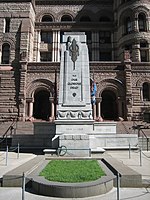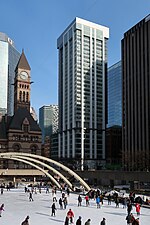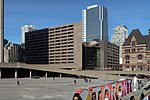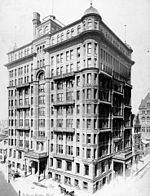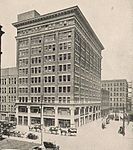Old City Hall (Toronto)
1899 establishments in OntarioBuildings and structures in TorontoCity and town halls in OntarioCity of Toronto Heritage PropertiesClock towers in Canada ... and 9 more
E. J. Lennox buildingsFormer courthouses in CanadaFormer seats of local governmentGovernment buildings completed in 1899National Historic Sites in OntarioRomanesque Revival architecture in CanadaTerminating vistas in CanadaUse Canadian English from January 2023Use mdy dates from January 2013

The Old City Hall is a Romanesque-style civic building and former court house in Toronto, Ontario, Canada. It was the home of the Toronto City Council from 1899 to 1966 and a provincial court house until 2023, and remains one of the city's most prominent structures. The building is located at the corner of Queen and Bay Streets, across Bay Street from Nathan Phillips Square and the present City Hall in Downtown Toronto. The heritage landmark has a distinctive clock tower which heads the length of Bay Street from Front Street to Queen Street as a terminating vista. Old City Hall was designated a National Historic Site in 1984.
Excerpt from the Wikipedia article Old City Hall (Toronto) (License: CC BY-SA 3.0, Authors, Images).Old City Hall (Toronto)
Queen Street West, Old Toronto
Geographical coordinates (GPS) Address External links Nearby Places Show on map
Geographical coordinates (GPS)
| Latitude | Longitude |
|---|---|
| N 43.6525 ° | E -79.381666666667 ° |
Address
Old City Hall
Queen Street West 60
M5H 2M4 Old Toronto
Ontario, Canada
Open on Google Maps


